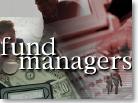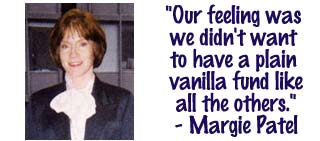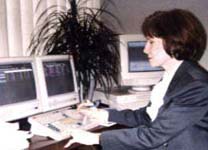|
Fund finds jewels in junk
|
 |
March 30, 1999: 12:30 p.m. ET
Tiny high-yield fund launched in tough times tries something different to win
|
NEW YORK (CNNfn) - Margie Patel could sense the vultures circling above Wall Street when she launched the Third Avenue High Yield Fund a year ago.
It wasn't a pretty time for junk bonds. The most speculative companies were lining up for loans, creating a swollen market with sky-high valuations. People were making so much money they forgot there was any risk at all.
The outlook was so ominous that Bear Stearns published a forecast with a picture of the Titanic on the cover.
"It had that eerie feeling of 1989," Patel said, recalling an earlier market peak. "I could feel that the market was too frothy."
Looking beyond volatility
But Third Avenue Funds, headed by well-known value investor Marty Whitman, is not a shop that worries about what the market is doing every minute.
"Marty's philosophy that I've tried to emulate is to look at the merits of a company, its position in an industry and its products," Patel said. "It lets you look beyond short-term volatility. We don't do what Wall Street does. We just don't think that's the way to make money."
Patel's fund is barely a blip on the screen with just $8.8 million in assets. But it earned 5.51 percent as of Monday and is ranked in the 4th percentile against much larger peers in its category, according to Morningstar, a Chicago fund-tracker. It is also one of the few funds that invests in so-called 'busted' convertible bonds.
(Convertible bonds can be exchanged for stock, while "busted converts" trade at a discount because the underlying stock has been beaten-down).
"My initial reaction was that it was a pretty lousy time to open a high-yield bond fund," said Eric Jacobsen, an analyst at Morningstar. "On the other hand, Marty Whitman is a highly revered manager…If anybody was going to be able to do it, it would be someone who works for Marty Whitman, somebody of that caliber."

Patel, who declines to give her age, is a soft-spoken woman with a wry sense of humor who, unlike many people in the high-yield business, uses the phrase "junk bonds." Petite and red-haired, she pored over details about the fund during an interview in her New York office recently.
"Our feeling was we didn't want to have a plain vanilla fund like all the others," she said.
High-yield bond funds invest in bonds issued by companies that are rated below investment grade by the credit rating agencies. The risk level can be mild to speculative -- and the greater the risk, the higher the yield, or return.
Patel felt that by using convertible bonds and busted converts, she could increase her returns beyond the limits of the call prices of junk bonds. It also could give her exposure in industries without a lot of high yield, such as technology.
"We wanted a way to capture the equity-like upside that you don't get in the junk bond universe," she said. About 75 percent of her portfolio is in busted converts.
The underlying companies of three of the fund's busted converts were recently restructured or taken over -- proof, she says, that she made smart choices.
For example, one of the companies, DSC Communications, a maker of telecommunications equipment, was bumped up two credit ratings to an investment grade A when it was taken over by Alcatel (ALA). Alcatel, a Paris-based company, designs telecommunications and multimedia equipment.
In that case, she paid a discount price of $95.05 for bonds with a face value of $100 on Feb. 20, and sold them at a premium for $101.20 on Oct. 15, or a gain of 6.25 percent in addition to the yield of 8 percent.
"That's pretty compelling," she said.
Favorite picks
Patel's favorite sector is technology, which has stabilized after getting hit hard by the Asia crisis of 1997/98.
"Going back to the economy, broadly-defined technology is the fastest-growing [sector]," she said.

Patel does her homework on holdings
Three of Patel's top 10 holdings are semiconductors, including a 5.3 percent stake in Credence Systems (CMOS), a maker of test equipment; Cymer (CYMI), which provides a laser source to put patterns in chips; and Lam Research (LRCX), a designer of processing equipment.
She finds the telecommunications sector just as exciting because of deregulation and rapid growth in the industry. The fund owns a 5.3 percent stake in Level 3 Communications (LVLT), which is building a fiber network using Internet technology.
A rocky ride
The plain-talking, gravelly-voiced Whitman said he didn't give much thought about the timing of opening the high-yield fund. The only thing that mattered was hiring a good manager. He tried to lure Patel to the company for about six months before he hired her in January 1998.
"I think she's a terrific analyst and I'm pleased with what she's doing," Whitman said. In fact, he even invested in Cymer for the Third Avenue Value Fund because of Patel's research.
But 1998 wasn't an easy ride for high yield.
Patel recalled that virtually any type of company was getting leveraged, including highly speculative gaming businesses, restaurants, commodity-related companies and "business plan" firms with ideas untested on Wall Street.
Bear Stearns was concerned about a range of issues at that time, including high valuations, said Walter McGuire, managing director at Bear Stearns.
Investors rushed to high yield because the spread, or the difference between the yield on junk bonds and ultra-safe Treasury bonds, had narrowed to 350 basis points. (A basis point is 1/100 of a percentage point).
"The market was under pressure from too much issuance," McGuire said.
There was $107 billion in new credit issued in the first six months of 1998, or about the same amount as all of 1997.
By October, amid a market correction, the spread had widened to 750 basis points and only the best companies could get credit. The level of credit issued in the last six months of the year fell to $22 billion.
The Third Avenue High Yield Fund saw its assets fall from about $10 million to $8.8 million. The Net Asset Value (NAV) dropped 20 percent, to $7.99.
But Patel, a veteran in high yield, said she had seen worse. She was heading the Advantage High Yield Fund around the time when Drexel Burnham Lambert went bankrupt and Michael Milken went to jail in 1991.
"There were so many things going wrong back in the early 1990s," she said. "It didn't look like things would ever turn around."
The situation in late 1998 was a cakewalk in comparison because it only lasted a few weeks, rather than years.
Outlook for 1999
Bear Stearns' McGuire said he is cautious in the short-term and is recommending the safest level of high-yield, rated BB, until the end of the year. But he said the market has done well for the last eight years or so, and he thinks that will continue in the long term.
"Long-term, this market has proven itself to be a very good vehicle for people to get additional yield in the fixed income portion of their portfolios," he said. "At the same time, it serves an efficient function for companies that need financing."
Likewise, Patel said the lower tier of the high yield market -- small companies, commodity-related businesses -- remains extremely risky. But she is hopeful about the higher tier of the market.
She argues the economy is strong and defaults remain low. Another good sign is that a lot of companies getting credit are doing initially public offerings or issuing more stock in a secondary offering, including two fund holdings, Level 3 and WinStar Communications (WCII).
"I think the high yield market looks pretty good overall." 
-- by staff writer Martine Costello
|
|
|
|
|
 |

|

